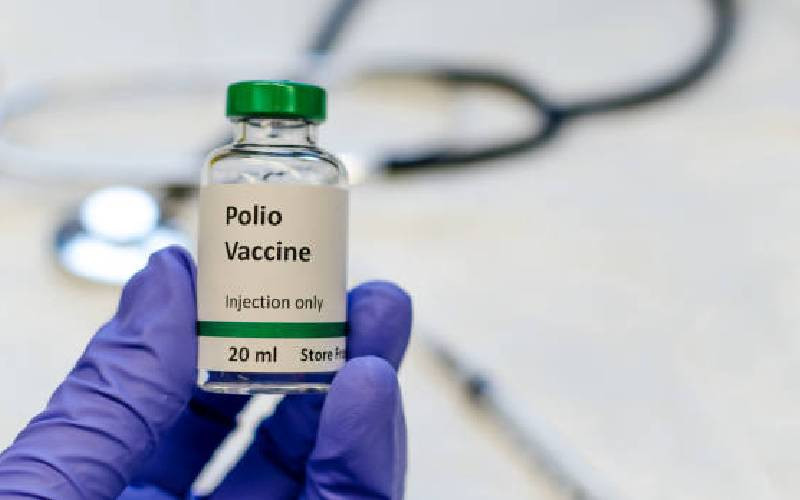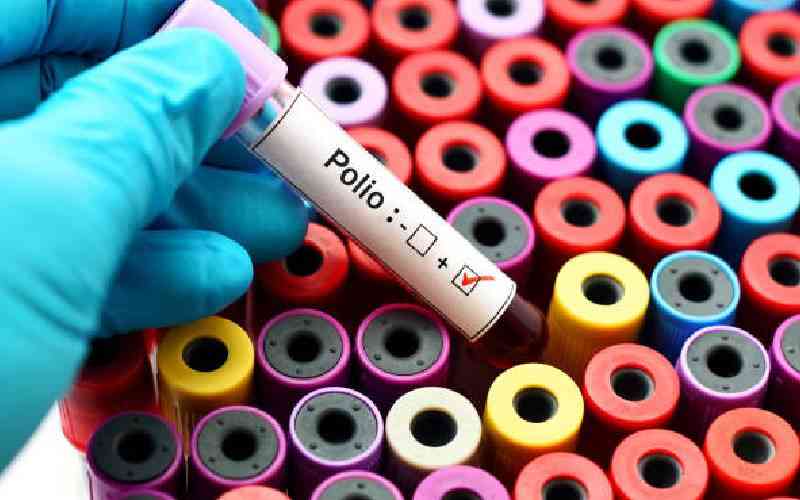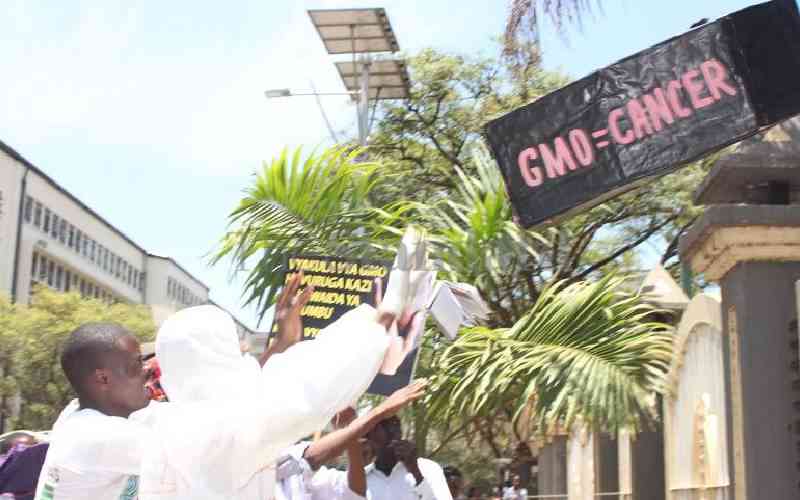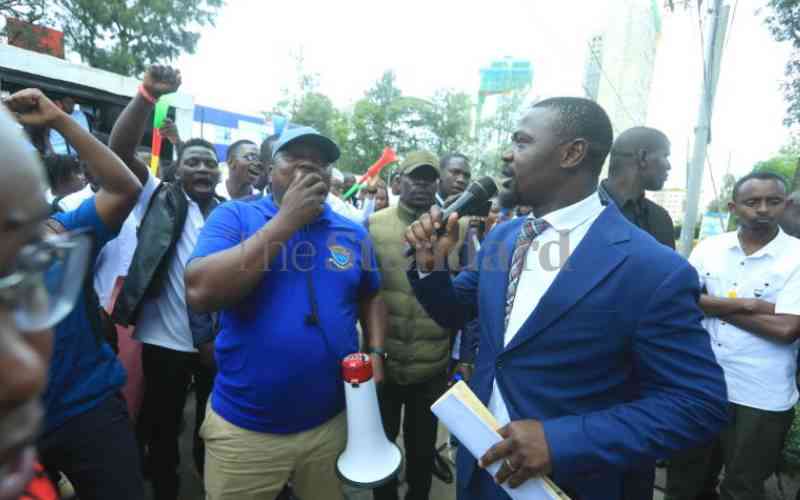
Four cases of polio have been confirmed in Kenya.
The vaccine-derived poliovirus type 2 (cVDPV2) was detected in Garissa, according to a report by the World Health Organisation (WHO).
Four genetically-linked cVDPV2 were isolated in samples from two acute flaccid paralysis (AFP) cases, and two asymptomatic healthy children of community contacts, from Fafi district, Garissa county.
Results of all the genetic sequencing analyses of all four isolates have shown that all four isolates are genetically linked to the cVDPV2 circulating in Banadir, Somalia.
"On 11 July 2023, WHO received an official report regarding the detection of a circulating vaccine-derived poliovirus type 2 (cVDPV2) in two acute flaccid paralysis (AFP) cases and two asymptomatic healthy children of community contacts from Hagadera refugee camp, in Kenya, the second-largest refugee camp in the world with over 100 000 refugees," reads a section of WHO report.
The first detected case was of a two-year-old boy, who was vaccinated with three doses of oral poliovirus vaccine (OPV), with no travel history, who developed paralysis on 26 May.
Samples were collected from the patient on June 1 and June 2, 2023.
The second case is of a two-year-old and seven-month-old girl with a travel history to Afmadhow, Lower Juba, southern Somalia, who was vaccinated with three doses of OPV.
- 'My mother had to live on the streets to protect me'
- Government allocates Sh1.2b to cure vaccine shortage
- Hesitant mothers told to visit hospitals for jabs
- WHO says early polio vaccination targets in Gaza surpassed
Keep Reading
The girl according to a statement by WHO developed paralysis on 27 May this year, with samples collected on June 2 and 3.
Further, a community contact, of a two-year-old boy who was asymptomatic was collected on 25 May 2023. It was found that the boy had zero doses of vaccination.
The second asymptomatic healthy child community contact was also identified from the Hagadera refugee camp with the same emerging strain from Somalia, whose case investigation is underway.
"The genetic sequencing analyses showed that all four isolates have undergone between 65 and 73 nucleotide changes from Sabin and are genetically linked to the cVDPV2 circulating in Banadir, Somalia,".

Polio is a life-threatening disease caused by the poliovirus that largely affects children under five years of age, causing permanent paralysis.
The is transmitted from person-to-person, mainly through the faecal-oral route.
Vaccine-derived poliovirus is a well-documented strain of poliovirus mutated from the strain originally contained in OPV.
Detection of vaccine-derived polio comes at a time UNICEF estimates of national immunization coverage, oral polio vaccine third dose (OPV3) and inactivated poliovirus vaccine first dose (IPV) stood at 91 per cent in Kenya in 2021.
Despite polio vaccination coverage being high nationally, coverage of the same in Hagadera camp is 77 per cent for both OPV3 and IPV as of May 2023, according to WHO report.
WHO noted that the Ministry of Health (MoH), with support from the Global Polio Eradication Initiative partners, have conducted a risk assessment, along with a field investigation
Additionally, the ministry through the Division of Disease Surveillance and Response and the Public Health Emergency Operations Centre, has activated a Technical Coordination Committee to begin preparations for the implementation of emergency outbreak response, as per internationally-agreed outbreak response guidelines, including rapid implementation of large-scale supplementary immunization activities, with the most appropriate, available type-2 containing polio vaccine.
Vaccination is also among measures to curb spread, with the first round of vaccination to commence in August, aimed at reaching out to all children under five years in Garissa county, and neighbouring counties with a Somali community as well as Nairobi, due to population movements.
A second and third round with the expansion of targeted areas is being planned to be conducted in September and October.
WHO added that active surveillance for additional AFP cases is being further strengthened, consideration is being given to establishing new environmental sites, cross-border surveillance is being intensified, and subnational immunity levels are being analyzed to identify potential and under-immunized populations and or areas.
 The Standard Group Plc is a multi-media organization with investments in media platforms spanning newspaper print
operations, television, radio broadcasting, digital and online services. The Standard Group is recognized as a
leading multi-media house in Kenya with a key influence in matters of national and international interest.
The Standard Group Plc is a multi-media organization with investments in media platforms spanning newspaper print
operations, television, radio broadcasting, digital and online services. The Standard Group is recognized as a
leading multi-media house in Kenya with a key influence in matters of national and international interest.











